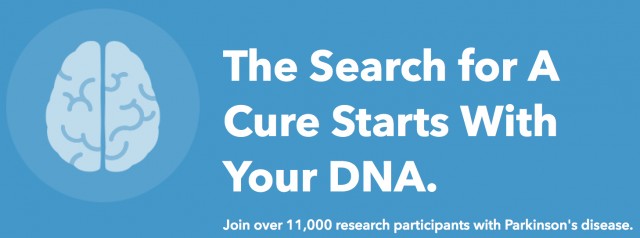Over the last year, three promising new treatments for symptoms of Parkinson’s became available in the United States, but progress has been less hopeful on the development of drugs to modify the progression the disease, according to researchers who spoke at an annual movement disorders conference in San Diego last month.
23andMe’s Paul Cannon, PhD, who serves as the manager for our Parkinson’s Research Community, was among the thousands of attendees at the massive 19th International Congress of Parkinson’s Disease and Movement Disorders in San Diego. The four-day event attracts scientists, clinicians and medical professionals from around the world, giving them an opportunity to share the latest treatments and the newest research into Parkinson’s disease.
“In terms of treatments for Parkinson’s it was a mixed bag,” said Paul.
While new options for the treatment of symptoms in the form of gels, skin patches, intestinal pumps, inhalers and even deep brain stimulation, offer Parkinson’s patients new ways for quickly treating certain symptoms, Paul noted that researchers also reported some setbacks in the development of other treatments that many had hoped could slow the progress of the disease. The use of gels, skin patches, pumps and inhalers are used for better delivery of the drugs levodopa and carbidopa, which effectively treat motor function symptoms for Parkinson’s patients. Paul said there is also some interesting clinical studies around non-levodopa drugs such as safinamide and rivastigmine, but there was little new to report around treatment for the progression of the disease.
“In terms of disease modifying therapies it was a much less successful year,” Paul said.
Probably the most notable setback in the drug development pipeline was the news around the halt of a late stage study of creatinine, an amino acid that researchers thought could help protect nerve cells in Parkinson’s patients. But the study was stopped because interim data showed the treatment didn’t help patients any differently than those treated with a placebo. Another disappointment was around the failure of the drug pioglitazone. In Paul’s assessment of the study for pioglitazone, there was some indication from biomarkers that the drug could still hold benefits if used at a different doses.
But in his time at the conference Paul said there were several presentations that indicate there are also some studies currently in the drug development pipeline. He singled out three that are either in phase three development or about to start – studies into the drugs isradipine, inosine and exanatide.
Others therapies to pay attention to, according to Paul, are two in early development that target alpha-synuclein – an antibody from the drug company Prothena, and a vaccine from Affiris.
If you’ve paid much attention to research into Parkinson’s you’ll know that a lot of focus has been on the role alpha-synuclein plays not just in Parkinson’s but also other neurodegenerative disorders. Alpha-synuclein is a protein that is primarily found in brain tissue. In Parkinson’s patients this protein clumps together in the brain. Warren Olanow, an MD and professor of neuroscience at Mount Sinai, discussed some of theories on the best therapeutic approaches to deal with this from using antibody based treatments to systems of either blocking the clumping or reducing the gene expression of alpha-synuclein.
Working at 23andMe, where our researchers have done several genome wide association studies that helped uncover new genetic associations with Parkinson’s, Paul said he was struck by some of the information presented by Andy Singleton, of the National Institutes of Health. Although studies indicate that as much as 30 percent of the risk for the most common type of Parkinson’s is genetic, the genetic variants found so far account for only about five percent of that risk. Even though genome wide association studies were used to discover 28 known variants associated with Parkinson’s disease, Singleton favors the use of whole genome sequencing as a better approach to find the remaining genetic variants. (23andMe is working on a multi-year study with Genentech to sequence 3,000 Parkinson’s patients to learn about the genetic underpinnings of the disease.)
In another promising presentation, the researcher Haydeh Payami, PhD at UC Berkeley and a joint faculty member at the HudsonAlpha Institute, reported on a nice example of gene environment interaction, Paul said. Looking at caffeine consumption and genetic risk, Payami’s research found that drinking coffee in general can reduce one’s risk for Parkinson’s by 30 percent. But for individuals with certain genotypes in two genes – GRIN2A and MAPK10 – caffeine consumption did little to reduce their risk for Parkinson’s. Yet when Payami looked at the 7 percent of individuals who had the less common genotypes in both of those genes coffee consumption was “highly protective.”
“In summary whilst lack of progress in the clinic is disappointing, continued insights into the underlying disease mechanisms from genetics and other routes of investigation, gives hope that we will see an increasing number of rationally targeted therapies being tested in well designed studies,” Paul said of what he learned at the conference. “Resources such as 23andMe Parkinson’s Research Community are a key part of this on-going research effort.”




